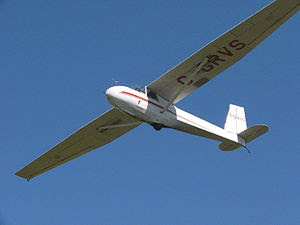Today I ran in my Nike Frees: jogged 2 miles to the Paly track and did about 3 miles of progressively faster laps...to a max of a 7 min/mile 1/4 mile, then back home.
Wow..such fun! I really like them.
A Lot.
Previously, running fast like that would have meant icing the heels to keep from having sore tendons. That worked, but it's not a good situation.
As I've alluded to in previous postings, recently I figured out that my Nike Vomeros (which I've been running in for quite a while..over two years) were probably the worst possible shoe....for me, anyway.
They are way
way too stiff: grab the toe and heel of your shoe and bend: it should bend at the ball of your foot. The harder it is to bend, the harder it will be for your foot to bend in the shoe. And the consequence of that is that you'll probably
not be striking the ground with your forefoot. Guess how we found out?
The Pegasus (and the Frees even more so), are very flexible. You can wrap the Frees soles up into an armadillo-looking ball if you care to.
The Vomeros also have a plastic heel cup that's built like a piece of body armor. It has no give, and if your heel moves up in the shoe, it's going to scrape on the cup where it cups back in at the top of your heel. This will make your tendon sore from rubbing, rather than actual running stress, but confuse the heck out of you. Guess how we found out?
The Vomeros also weigh more than the other two shoes by quite a bit...perhaps 4 ounces. They do have cushioning, but, since when did I ever notice a problem with foot soreness from lack of that? Never. I bought them assuming more cushioning is good...sigh.
I now firmly believe, with every fiber of my Achilles tendons, that a consistent forefoot strike is VERY IMPORTANT to running injury free. Research has shown that the maximum force your foot experiences is the same, independent of the shoe cushioning.
How can this be? Because your brain changes how you land when you have less cushioning: it actually tenses the muscles a few milliseconds before impact to absorb the energy to use for the toe-off later. If you have soft, STIFF, shoes, your brain doesn't orchestrate the strike the same way .. yes, the cushioning means you don't hit any harder, but when you do hit you don't have a springy muscle to take up the tension on your tendons. So, they get actually get more stress.
For me this isn't theory any more. I've actually felt it happen and it only took one run to show me things were pretty massively screwed with the Vomeros. I learned that my calves were not doomed to be always tight and stiff...they were
weak.
Now I know I need to do exercises to keep them strong (and make up for 2 years of laziness in the Vomeros). Example: stand on the edge of a stair on your toes with the rest of your feet hanging out. Lower and raise 20 times. Emphasis (and the crucial eccentric strengthening) should be on the slow, controlled lowering, not the raising! When you can do this easily, do it with all your weight on one foot at a time. (Careful the first time!)
BUT, I'm not completely sucking the kool-aid of the Barefoot crowd. While the
maximum impact is less with barefoot-style running, the actual total integrated stress transmitted to the bones of your foot is probably higher barefoot than with the Frees (or any other light, flexible shoe).
And let's not even talk about stones, glass, sticks, and just hard broken concrete.
I think barefoot running might be good to do on grass from time to time, but for the bulk of your training and racing, a minimalist shoe is just the ticket.
So, as I said, I really like the Frees so far. My stride feels so light and easy that my breathing is all messed up..I do 3/3, sometimes 3/4, 2/3, all sorts of patterns I've never used (previously it was pretty much 2/2 unless I was going really slow, then 3/3).
I'm not sure why this is.....obviously the hope is that I'm more efficient, but that's not proven just yet. I'm thinking it's more of a "master reset" on my running stride and my brain is figuring out new patterns of breathing to go with the new stride.
Imagine you learned how to juggle baseballs wearing heavy leather gardening gloves, and then you were asked to juggle beanbags wearing light silk gloves. Obviously your brain would have some adjusting to do... I think that's what's happening.
And no, I haven't read "Born to Run". I'm waiting for the paperback version.








